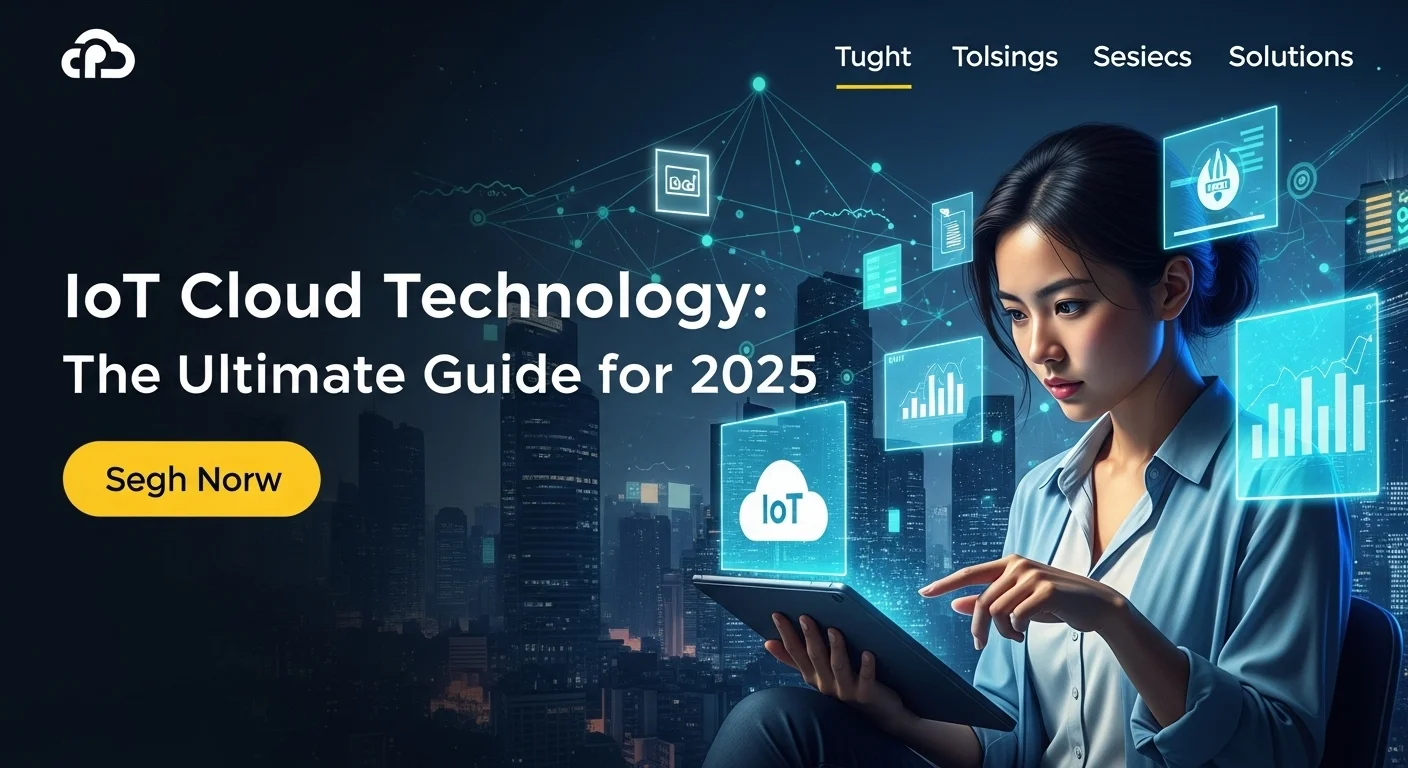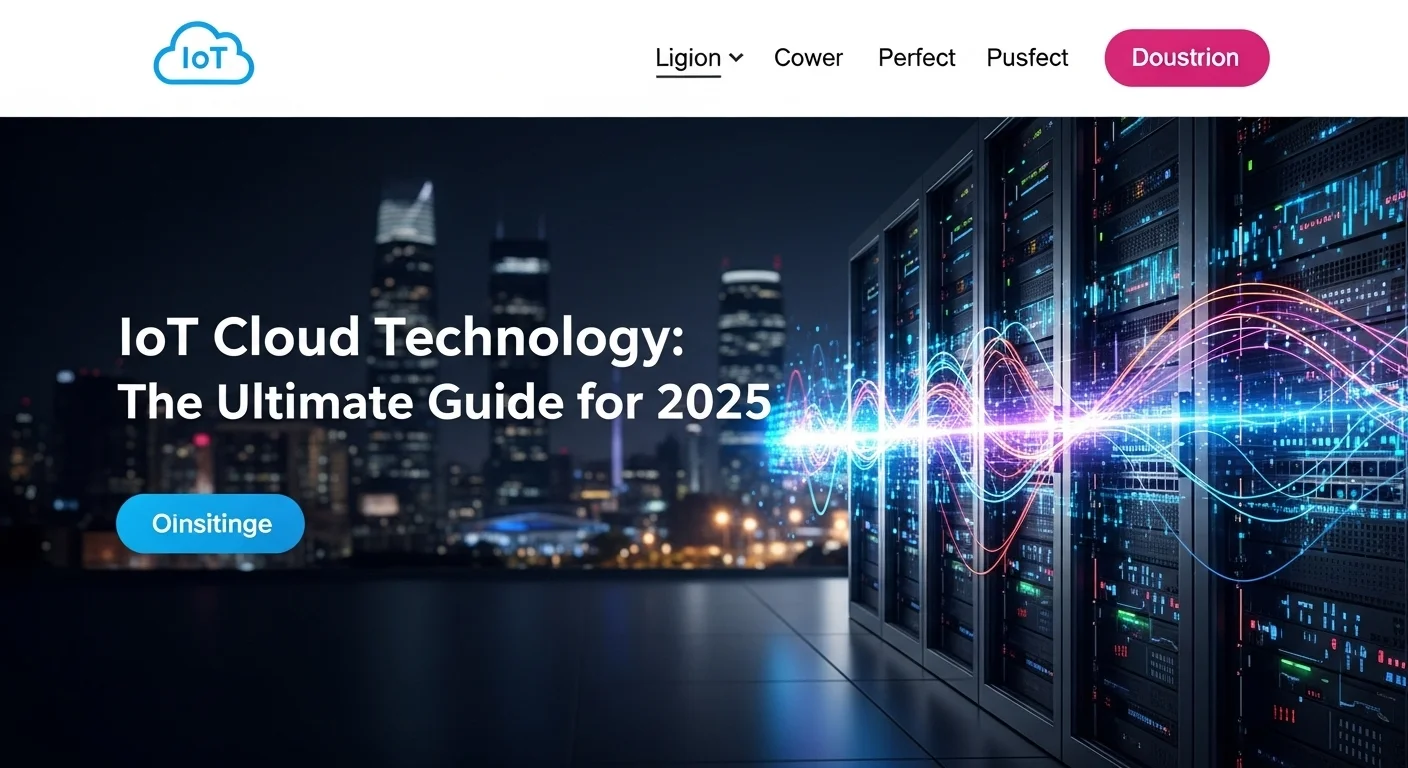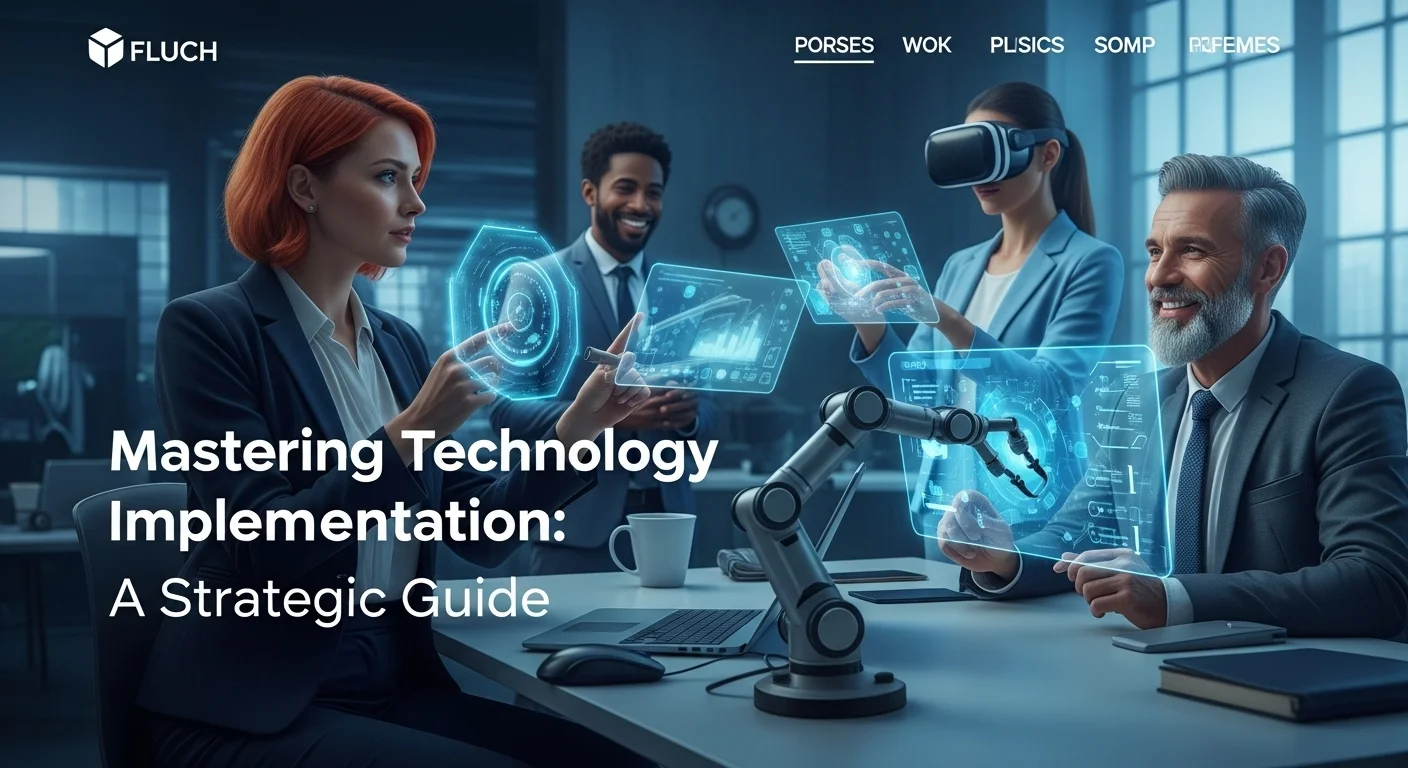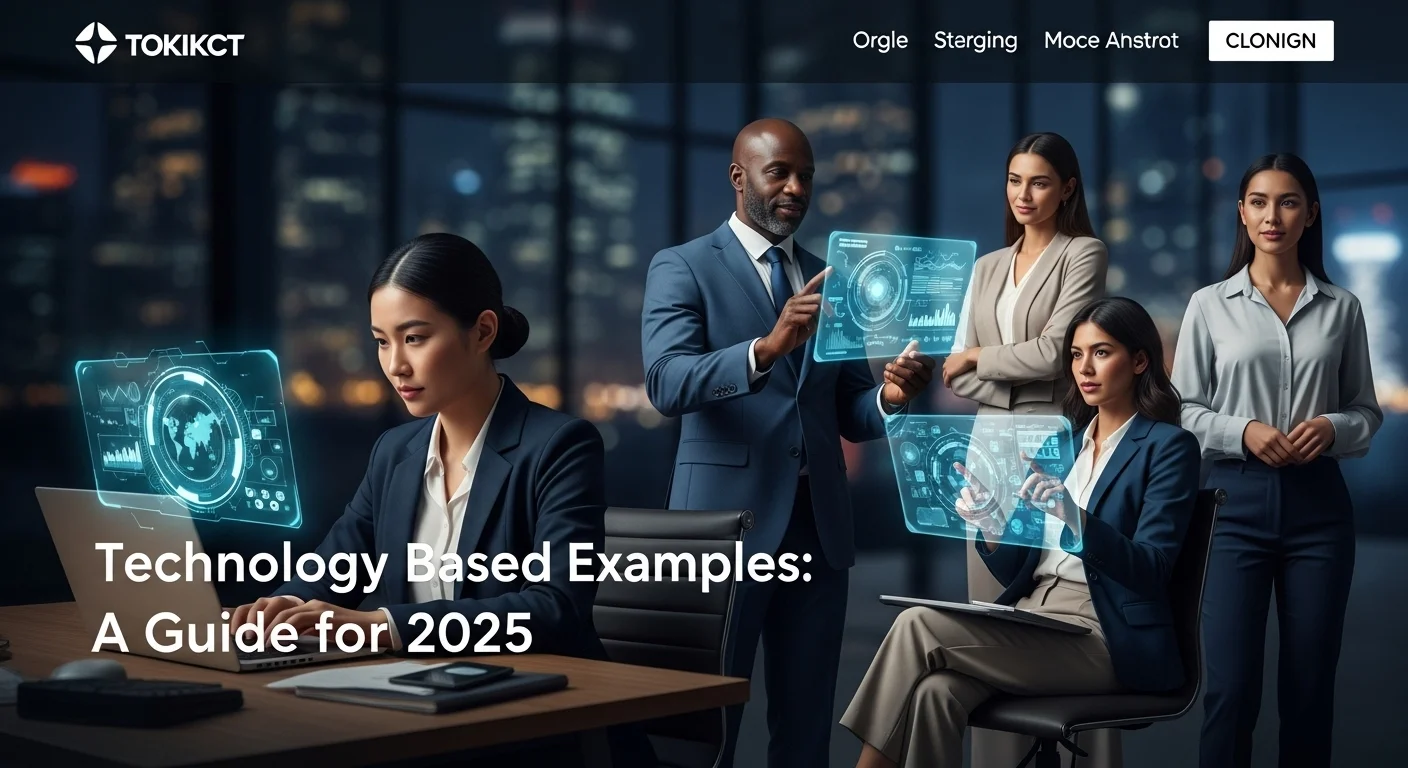IoT Cloud Explained: How It Powers Everything from Your Smart Home to Entire Cities

Executive Summary
Have you ever wondered how your smartwatch tracks your run and syncs it to your phone, or how a factory can predict when a machine needs maintenance? The secret is a powerful technology called the IoT Cloud. Think of it as the invisible brain and nervous system connecting billions of smart devices around the world. In this guide, I'll break it all down in simple terms. We'll explore what the IoT Cloud really is, how its architecture works without getting too technical, and take a look at the major players like AWS, Azure, and Google Cloud to help you understand their differences. We'll also dive into some truly amazing applications that are changing healthcare, manufacturing, and even the cities we live in. This article is for anyone—business leaders, tech enthusiasts, or just curious minds—who wants to understand the technology that's quietly shaping our future.
Table of Contents
Table of Contents
- What is IoT Cloud and Why Does It Matter?
- How a Cloud-Based IoT Architecture Works
- The Big Players: Comparing IoT Cloud Providers
- A Deeper Look at IoT Cloud Services
- Smart Strategies for Your IoT Cloud Journey
- Keeping Your IoT Cloud Secure
- The Future is Now: Exciting IoT Applications
What is IoT Cloud and Why Does It Matter?
The combination of the Internet of Things (IoT) and cloud computing has given us something truly special: the IoT Cloud. But let's cut through the jargon. At its heart, the IoT Cloud is a massive, powerful system that gives smart devices—from tiny sensors to giant industrial machines—a place to send their data and the brainpower to make sense of it all. I've spent years working on these systems, and I've seen firsthand that most IoT devices are great at one thing: collecting data. They aren't built to store tons of information or run complex calculations. That would make them expensive, bulky, and power-hungry. This is where the cloud comes in. By sending their data to the cloud, these devices can stay simple, cheap, and efficient. The cloud provides virtually endless storage and incredible processing power on demand. This is what makes it possible to connect billions of devices across the globe.
The importance of this can't be overstated. For a business, it's a game-changer. Imagine trying to build your own data center to handle data from a million smart meters. The cost would be astronomical. With the IoT Cloud, you pay for what you use, allowing even small startups to build world-class solutions. The benefits are huge. It offers incredible scalability; as you add more devices, the cloud simply expands to handle the load. It makes data accessible from anywhere, so you can manage your factory from a tablet on the beach. Most importantly, it's a central hub where you can analyze data from thousands of sources to find valuable insights. You can spot trends, improve efficiency, and even create entirely new services for your customers. Plus, the reliability of major cloud platforms means your system stays online, which is essential in our digital world.
How a Cloud-Based IoT Architecture Works
To really get what an IoT Cloud does, it helps to think of it as a four-layer system that takes data from the real world and turns it into something useful. I often explain this cloud based IoT architecture to my clients using a simple analogy:
1. The Device Layer (The Senses): This is where it all begins. This layer is made up of the 'Things' in the Internet of Things: sensors and actuators. Sensors are like our eyes and ears, collecting data about the world—temperature, motion, location, you name it. Actuators are like our hands and feet; they take commands and perform actions, like turning on a light or shutting off a valve. They are the physical connection to the world.
2. The Connectivity Layer (The Nervous System): Once a sensor has some data, it needs to send it somewhere. This layer is the network that carries the signals. It can use short-range tech like Wi-Fi or Bluetooth, or long-range networks like 5G or LoRaWAN for devices spread over a large area. Often, you'll find an 'IoT Gateway' here. It's like a local manager that gathers data from nearby devices, maybe cleans it up a bit, and then sends it securely to the cloud. It’s a crucial middleman that keeps things organized.
3. The Cloud Layer (The Brain): This is where the magic happens. When data arrives, it’s received, stored, and processed. This is the home of powerful cloud based services in IoT. Here’s what it does:
- Receives Messages: Services like AWS IoT Core or Azure IoT Hub act as the front door, securely managing connections from millions of devices.
- Stores Data: Data is stored in different ways. Some goes into massive 'data lakes' for long-term analysis, while time-stamped sensor readings go into special time-series databases for quick access.
- Analyzes Data: This is the core of the brain's function. It can analyze data in real-time to look for immediate problems or run deep analysis on historical data using powerful tools like artificial intelligence and machine learning. This is where raw numbers are turned into predictions, like forecasting when a machine will fail.
4. The Application Layer (The Face): This is the final piece of the puzzle—the part you actually interact with. It could be a dashboard on your computer, an app on your phone, or an alert sent to a manager. This layer visualizes the insights from the cloud, gives you controls to manage your devices, and plugs the IoT data into your daily business operations. It’s the user-friendly interface that makes the entire powerful system useful to a human.
The Big Players: Comparing IoT Cloud Providers
The incredible infrastructure behind the IoT Cloud is run by a few tech giants we all know. These IoT cloud providers offer suites of tools that make building these complex systems much easier. The three main players are Amazon Web Services (AWS), Microsoft Azure, and Google Cloud. From my experience, choosing one is a major strategic decision. They're not just vendors; they become partners in your project. AWS is the established market leader, offering a dizzying array of mature tools. Microsoft Azure is a beast in the enterprise world, especially if your company already uses Microsoft products. Google Cloud, while a bit different in its approach after retiring its specific IoT Core service, is an absolute powerhouse in data analytics and AI. They each have their strengths, and the right choice depends entirely on your project's goals, your team's skills, and your budget. This healthy competition is great for everyone, as it continues to make the most innovative applications of IoT in cloud computing more accessible and powerful every year.

A Deeper Look at IoT Cloud Services
When we peek under the hood of an IoT Cloud, we find a beautifully orchestrated collection of services working together. It’s not just one big computer; it’s a suite of specialized tools that handle every step of the data journey. Fully understanding these components is key for anyone looking to build a robust IoT solution. The foundation of it all is cloud computing in IoT, which gives us the flexibility to scale up or down as needed, a luxury that old-school, on-site IT could never offer. Without this, the cost and complexity of handling the data tsunami from modern IoT devices would be a non-starter.
Technical Deep Dive: How the Services Work Together
A well-designed cloud based iot architecture is more than just the four layers we discussed. Inside the cloud layer itself, there's a fascinating dance of micro-services that bring an IoT solution to life.
Device Connection and Management: Imagine a secure bouncer at a massive club. That's the role of services like AWS IoT Core or Azure IoT Hub. They manage a registry of all approved devices, checking IDs and authenticating every connection before any data can be exchanged. This is your first and most critical line of defense. These services speak the language of IoT, primarily MQTT—a lightweight messaging language perfect for small, battery-powered devices—but also support standards like HTTPS. They also allow you to talk back to your devices, sending commands to trigger an action or, crucially, to update their software remotely.
Routing and Storing Data: Once data is safely inside, it needs to go to the right place. This is handled by a flow that looks something like this:
- Message Routing: A 'rules engine' acts like a traffic cop. It inspect incoming messages and sends them to different places based on what's inside. For example, a high-priority 'failure' alert might be sent straight to a notification system, while routine temperature readings are sent to be stored.
- Data Lakes: Think of this as a vast, affordable library for raw data. Services like Amazon S3 are perfect for storing huge volumes of historical IoT data. This data is a goldmine for later analysis and for training AI models.
- Time-Series Databases: For things you want to see on a live dashboard, like a sensor reading over the last hour, you need a specialized database like Amazon Timestream. It's built to store and retrieve data with a timestamp incredibly quickly.
- Other Databases: Standard databases, both SQL and NoSQL types, are used to store things like device information, user profiles, and application settings.
Unlocking Value with Analytics and AI: This is where you turn raw data into money-saving, efficiency-boosting insights. The cloud provides a formidable toolbox:
- Stream Analytics: These tools, like AWS Kinesis, analyze data on the fly, as it arrives. This allows you to detect a problem and trigger an automatic response in seconds, not hours.
- Batch Analytics: For a deeper look at your data, tools like Apache Spark or Google BigQuery can comb through petabytes of historical data in your data lake to find long-term patterns and insights that you'd otherwise miss.
- Artificial Intelligence (AI): This is the most exciting part for me. All the top IoT cloud providers offer incredible AI platforms. We use these to build models for things like predictive maintenance. By training a model on sensor data from a machine, it can learn to predict a failure before it happens, saving massive amounts of money and preventing downtime.
A Comparative Analysis of Leading IoT Cloud Providers
Choosing between AWS, Azure, and Google Cloud feels like a big decision because it is. They all provide the core services, but their philosophies and strengths are different. Here’s my take on it, based on years of deploying on all three.
Amazon Web Services (AWS) IoT:
- Strengths: AWS is the original and the giant in the room. They have the most comprehensive set of IoT services and a massive market share. Their tools are mature, highly scalable, and integrate with a mind-boggling number of other AWS services. I often think of it as a giant box of high-quality LEGOs; you can build absolutely anything you can imagine.
- Considerations: That giant box of LEGOs can be intimidating for beginners. The sheer number of options can be overwhelming, and predicting costs can be tricky because you pay for each little piece you use.
Microsoft Azure IoT:
- Strengths: Azure's superpower is its seamless integration with the Microsoft ecosystem. For any company that runs on Windows, Office 365, and other Microsoft tools, Azure is often the path of least resistance. It feels familiar. They have a very strong focus on 'edge computing' with Azure IoT Edge, allowing powerful AI to run directly on devices, and their end-to-end security solution, Azure Sphere, is top-notch.
- Considerations: While powerful, its service catalog isn't quite as vast as AWS's. Some developers feel it's a little less flexible, favoring a more all-in-one platform approach versus AWS's granular services.
Google Cloud Platform (GCP) IoT:
- Strengths: Google's DNA is data. While they took a different path by discontinuing their specific 'IoT Core' product, their strength is undeniable. You can pipe your IoT data into their world-class analytics tools like BigQuery and their AI platform, Vertex AI. If your project's main goal is to perform heavy-duty machine learning on massive datasets, GCP is an incredible choice. Their global network is also famously fast and reliable.
- Considerations: The lack of a dedicated, all-in-one IoT service means you have to be more hands-on in connecting the pieces. It feels more like a 'build-your-own' solution, which can be a hurdle for teams looking for a more guided experience.
Ultimately, the best provider depends on your unique situation. A nimble startup might love the endless flexibility of AWS. A large corporation will appreciate the deep enterprise integration of Azure. A data-science-driven company might be drawn to the raw analytical power of Google Cloud. No matter which you choose, these platforms are the launchpad for the most innovative applications of iot in cloud computing.

Smart Strategies for Your IoT Cloud Journey
Getting an IoT Cloud project off the ground is about more than just technology; it's about strategy. Over the years, I've seen projects soar and others stumble, and the difference often comes down to planning and best practices. To make sure your investment pays off, you need to think about security from the start and keep an eye on the future. The power of cloud computing in IoT is immense, but you have to be smart and careful to unlock its full, safe potential.
Best Practices for IoT Cloud Implementation and Management
A successful IoT project is built on a solid foundation. Here are a few key pieces of advice I always give my clients.
1. Start with 'Why?': Before you even think about sensors or cloud platforms, ask the most important question: What business problem are we solving? Are we trying to cut costs, improve safety, or create a new product? A clear goal will be your north star, guiding every technical decision you make and ensuring your final product delivers real value.
2. Build for Scale, Even if You Start Small: Many projects begin as a small-scale pilot, and that's great. But you have to design the architecture as if it will one day support a million devices, not just a hundred. This means choosing scalable cloud based services in IoT and designing your data pipelines to handle a flood, not a trickle. The cloud can stretch, but your application has to be built to take advantage of that elasticity.
3. Have a Data Plan: Data is the fuel of your IoT system, but it needs to be managed. Create a plan for the entire lifecycle of your data. Decide what's processed instantly on the device (at the 'edge'), what's analyzed in the cloud, and what gets archived for long-term storage. This isn't just a technical exercise; with privacy laws like GDPR, proper data governance is a legal necessity.
4. Plan for Updates from Day One: Your IoT devices in the field are not static. They will need software updates to fix bugs, patch security holes, and add new features. A system for Over-the-Air (OTA) updates is absolutely essential. All the major IoT cloud providers offer tools to help you manage and deploy these updates securely across your entire fleet of devices.
Keeping Your IoT Cloud Secure
With thousands of devices connected to your network, security has to be your top priority. In my experience, treating security as an afterthought is the single biggest mistake you can make. It's like building a house and then trying to add the foundation.
1. Lock Down the Device: Security begins with the physical device. Use hardware that has security built-in, like a secure storage element to protect its unique identity and credentials from being copied. It's the digital equivalent of giving each device a tamper-proof passport.
2. Secure the Connection: Any data sent between the device and the cloud is vulnerable. It must be encrypted. Use strong, modern security protocols like TLS 1.2+ to create a secure tunnel for your data to travel through. This prevents anyone from snooping on the data or injecting fake commands.
3. Secure the Cloud: In the cloud, use the 'principle of least privilege.' This means every user and every service should only have the bare minimum permissions needed to do its job. Enforce strong passwords and multi-factor authentication (MFA) for anyone accessing the system. Think of it as giving out keys that only open specific doors, not the master key to the whole building.
4. Watch Everything, All the Time: Security is a continuous process. You need to constantly monitor your devices and your cloud services for strange behavior. Modern AI tools can learn what 'normal' looks like and automatically flag anomalies—like a device suddenly sending way more data than usual—that could signal a security breach.
The Future is Now: Exciting IoT Applications
The world of IoT Cloud is moving incredibly fast. Staying on top of the trends is key to finding new opportunities. Here are some of the most innovative applications of IoT in cloud computing that are already changing our world:
1. Smart Manufacturing (Industry 4.0): This is a huge one. Factories are embedding sensors in their machinery to stream performance data to the cloud. AI algorithms analyze this data to predict when a part will fail, allowing for repairs before a costly breakdown occurs. They're also creating 'digital twins'—perfect virtual copies of their equipment—to test improvements and optimize processes without disrupting the real factory floor.
2. Smart Healthcare (IoMT): The Internet of Medical Things is making healthcare more personal and proactive. Wearable sensors allow doctors to monitor patients with chronic conditions from their homes, getting real-time alerts if something is wrong. This is already reducing hospital visits and saving lives. Inside hospitals, IoT is used to track vital equipment and streamline operations.
3. Smart Cities: Cities are using IoT to become cleaner, safer, and more efficient. Smart streetlights dim when no one is around to save energy. Sensors in trash cans tell sanitation crews which bins are full, optimizing collection routes to save fuel and time. Connected traffic lights can analyze traffic flow in real-time to reduce congestion.
4. The Growth of the Edge: While the cloud is the central brain, there's a huge push to do more processing at the 'edge'—on or near the device itself. For things that need instant decisions, like a self-driving car avoiding an obstacle, there's no time to send data to the cloud and wait for an answer. Edge computing handles the urgent tasks locally and sends only the important summaries to the cloud. The future is a smart hybrid where the edge and the cloud work together seamlessly.
5. AI-Driven Automation: The next step is connecting all these systems. Imagine a supply chain where sensors on a cargo ship detect a delay. An AI system in the cloud automatically re-routes other shipments, updates inventory levels in the warehouse, and notifies everyone involved, all without a single human lifting a finger. This deep fusion of AI, IoT, and cloud is where we're headed. To keep up with the fast-paced world of tech, I often check sources like TechCrunch for the latest news and breakthroughs.
Expert Reviews & Testimonials
Sarah Johnson, Business Owner ⭐⭐⭐
The information about IoT Cloud is solid, but as a business owner, I'd love to see even more practical, real-world examples of how small companies can get started.
Mike Chen, IT Consultant ⭐⭐⭐⭐
A very useful article on IoT Cloud. It really helped clarify the main concepts for me. A few of the more technical bits could be broken down a little further, but overall it's great.
Emma Davis, Tech Expert ⭐⭐⭐⭐⭐
Excellent article! This is a comprehensive and well-explained guide to the IoT Cloud. It was incredibly helpful for my specialization, and I understood everything perfectly. Fantastic job!



